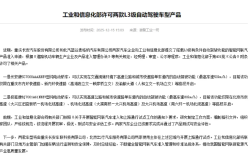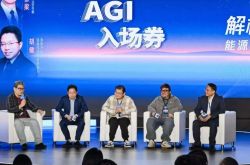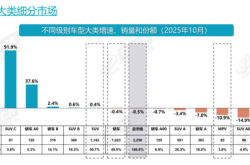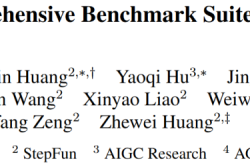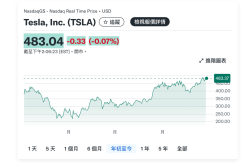Understanding "AI+", It's Ushering in the Era of the Intelligent Economy
![]() 09/03 2025
09/03 2025
![]() 564
564
Recently, the State Council issued the "Opinions on Deepening the Implementation of the 'AI+' Action Plan," elevating 'AI+' to a pivotal strategy for the next decade.
This recalls the 'Internet+' initiative a decade ago, which spurred the rise of applications like Meituan, Didi, and Pinduoduo, profoundly transforming consumption patterns and lifestyles.
Today, 'AI+' envisions an even grander future: AI penetration rates are surging, the intelligent economy is emerging as a growth engine, and society is entering a new era of 'intelligence.'
This is not merely a technological upgrade but a fundamental shift in development paradigms. It solidifies the strategic positioning of the 'intelligent economy.' While traditional economies compete on resource allocation efficiency, intelligent economies will compete on cognitive creativity. Future competitiveness hinges on integrating AI into the core of enterprises, achieving a leap in efficiency.
Currently, AI is not just a productivity revolution but a far-reaching social revolution. Although 2027 is still 16 months away, AI's impact is already evident across various sectors. Riding this wave, we can already glimpse the contours of the future.
/ 01 / Behind the 'Three-Step Strategy,' AI is Replicating the Internet's Success Story
If 'Internet+' transformed the way we shop, travel, and eat, 'AI+' aims to drive a deeper restructuring of productivity.
The document outlines a three-step strategy:
2027: Deep integration of AI with six key industries, with smart terminals and agents achieving a penetration rate exceeding 70%, and AI fully effective in the economy and governance.
2030: Penetration rate exceeding 90%, with AI becoming infrastructure akin to water and electricity networks, and the intelligent economy becoming a growth engine.
2035: Full entry into the 'intelligent society,' providing core support for modernization.
In other words, in three years, AI assistants, AI employees, agents in various industries, and AI hardware will be as ubiquitous as smartphones and mobile payments today, with over 70% of people relying on them.
By 2030, a 90% penetration rate signifies that AI will become the underlying infrastructure of society. Failing to integrate AI into daily life and work by then will mean falling behind the mainstream.
To illustrate the significance of these penetration rates, consider the mobile internet's growth from 2012 to 2017, when it increased its penetration rate from 74.5% to 97.5% in just five years. In 2012, Didi was nascent, and most people were unaware of this ride-hailing app. Meituan, too, was focused on group-buying and hadn't ventured into food delivery.
By 2017, Didi had become a national travel superpower, with a daily order volume exceeding 25 million and over 400 million users across more than 400 cities. Meanwhile, Meituan was China's largest lifestyle service platform, with daily food delivery orders exceeding 18 million and comprehensive services in hotels, movie tickets, and on-site services, valued at nearly 30 billion USD.
Five years witnessed not just a leap in technological penetration rates but also a reshaping of social habits.
Today, AI is at a similar juncture as Didi and Meituan were in 2012: AI assistants, AI employees, vertical agents, and AI hardware are still novelties for most people. However, according to the document's plan, it will only take three years for the penetration rate to exceed 70%. If this materializes, AI will swiftly transition from a 'niche novelty' to a 'universal necessity,' akin to Didi and Meituan.
More bluntly, the next three to five years will see a comprehensive restructuring of lifestyles and production methods. Just as no one could have foreseen the ubiquity of ride-hailing apps or online food ordering before 2017, by 2030, no one will question 'what can AI do?' but will take it for granted to use AI for writing documents, meetings, data analysis, and decision-making.
More importantly, this 'AI+' blueprint not only outlines the future of the AI era but also provides a concrete action plan.
/ 02 / From Education Stress Relief to Universal Healthcare, AI is Becoming a New Tool for People's Livelihood
The 'AI+' document highlights six key directions, with the most direct relevance to ordinary people being welfare. Particularly in education and healthcare, which are of utmost concern to the public, AI is already playing a tangible role.
In education, the primary pain point is excessive study pressure on children. However, much of this pressure stems not from the knowledge itself but from inefficient and repetitive homework.
A special national education big data research project conducted by iFLYTEK and Beijing Normal University analyzed 3.5 billion homework assignments from Chinese students and found that 60% were inefficient and repetitive exercises.
This is where AI's value lies. For instance, iFLYTEK's Intelligent Homework Notebook deeply analyzes students' learning behavior based on billions of real answer data, accurately assigning homework to each child, achieving hierarchical assignments, and avoiding meaningless question drills. Actual application data shows that after using it, students' homework practice effectiveness improves by 30%, and their error resolution rate increases by 20%.
In the classroom, AI is also becoming a valuable assistant for teachers. The virtual assistant on iFLYTEK's AI blackboard brings abstract knowledge points to life. Characters from textbooks, once confined to text, now become intelligent partners that can 'converse' and 'interact,' truly shifting the classroom's focus to students and instantly sparking their curiosity and thirst for knowledge.
AI also plays a role in after-school tutoring. The iFLYTEK AI Learning Machine dynamically generates personalized exercises based on students' answers. Incorrect questions are not only marked but also automatically 'transformed' into similar question types until they are truly mastered. This AI-driven, one-on-one tailored teaching approach is making children's learning more efficient.
AI can not only help students reduce their burden but also alleviate teachers' stress. Spark Teacher Assistant increases teaching design efficiency by 61% and courseware production efficiency by 64%. The Spark Intelligent Grading Machine has been sold to Singapore and has received unanimous recognition from the local Ministry of Education, industry experts, and renowned schools.
In short, AI is genuinely transforming the educational landscape: children learn more efficiently, and teachers teach more effortlessly.
Similar changes are occurring in healthcare. AI is making universal access to medical resources a tangible reality.
In healthcare, AI has already produced numerous mature case studies. For example, in primary healthcare, iFLYTEK's Smart Doctor Assistant has been deployed in over 75,000 primary healthcare institutions nationwide, providing doctors with over 1.01 billion diagnostic suggestions, helping correct millions of diagnoses, and identifying hundreds of millions of irrational prescriptions, bolstering village and township doctors' diagnostic confidence.
Ping An Good Doctor's AI-assisted consultation system is also widely used in internet hospitals and online consultation scenarios. It quickly generates preliminary diagnostic opinions based on a massive case database and recommends appropriate departments or medication plans, giving patients a preliminary direction before seeing a doctor.
Meanwhile, in tertiary hospitals, iFLYTEK Healthcare's AI medical record quality control system fully covers the three core scenarios of outpatient, inpatient, and medical record homepages, realizing a full-process closed-loop management of 'real-time reminders during the event - automatic quality control afterwards.'
AI-driven medical record quality inspection coverage has increased from less than 5% of traditional manual sampling to 100% full coverage, significantly reducing the risk of medical errors and providing robust support for the standardization of diagnosis and treatment and data governance. The specialized CDSS clinical decision support system covers over 1,700 diseases, effectively improving screening efficiency and prevention and treatment accuracy for high-risk patients, helping doctors avoid detours when facing complex cases and reducing misdiagnoses caused by information asymmetry.
On the consumer side, AI is also playing a crucial role. For instance, the iFLYTEK XiaoYi app has been downloaded by over 24 million people, completing over 100 million health consultations.
Many use it as a personal 'health consultant,' capable of checking medications, interpreting medical examination reports, and generating health records in conjunction with smart home devices. Pregnant women can learn about medication risks through XiaoYi and verify that the conclusions match those of doctors; parents can use XiaoYi to understand medical reports in advance when taking their children to the doctor, improving communication efficiency with doctors.
Now, the government's 'AI+' document clearly states that priority should be given to promoting AI applications in the field of people's livelihood. Education and healthcare, as the two sectors most closely related to people's lives, are naturally placed at the forefront.
This means that the aforementioned AI applications will no longer remain at the exploratory stage of enterprises but will be systematically promoted at the national strategic level. Policy-driven, existing successful models will be replicated and promoted faster, and societal expectations will also be realized sooner.
Take education as an example; personalized teaching is becoming a reality. An AI teacher can simultaneously teach thousands of children while customizing learning plans for each, identifying weaknesses, explaining them in the most suitable manner, and even providing deeper knowledge for exceptionally talented children.
This is the ultimate tool for promoting educational equity. Driven by the 'AI+' strategy, such scenarios will be popularized faster, truly benefiting students nationwide. Similarly, in healthcare, primary diagnosis and treatment, remote health management, and personalized disease warnings are gradually being taken over by AI.
The introduction of the 'AI+' policy aims to drive these businesses from sporadic pilots to large-scale popularization.
/ 03 / A New Round of Consumption Upgrade Driven by AI
In addition to people's livelihood, enhancing consumption quality has also been included as one of the six directions in the 'AI+' document. Put simply, it aims to make technology not just a spectacle but a genuine part of everyday life, improving the quality of daily living.
In the past, smart home appliances were often more decorative than functional. TVs had one-minute ads before booting, voice recognition struggled with dialects, and the elderly couldn't use them at all. The 'intelligence' of that era felt more like a gimmick, far removed from real life.
But with AI, everything is different. Now, home appliances are truly starting to integrate into our lives.
Recently, iFLYTEK and Haier jointly launched an AI Smart TV, which is no longer just a screen for movies but has truly become the 'health manager' of the home.
The most intuitive change is the interactive experience. The elderly no longer have to endure one-minute ads before booting, and the TV screen lights up in two seconds, clean and concise. Instead of fumbling with the remote control, they can now directly switch channels and play programs by shouting in dialects.
This TV also incorporates the healthcare intelligent agent 'iFLYTEK XiaoYi' and can be linked with supporting smart blood pressure monitors, blood oxygen rings, and other devices. When the elderly want to check their blood pressure, they only need to fasten the cuff, and the data is immediately synchronized to the TV, automatically generating a health record. Even when their children are not around, they can see their parents' health status at any time through their phones, and the system can even provide early warnings if abnormalities occur.
AI takes care of daily life at home more thoughtfully, and it is also playing a crucial role outside the home.
For instance, the latest flagship phones from OPPO, vivo, and Honor come with built-in large model assistants. In the past, you might have needed three or four apps to get things done, but now one phone can help you complete them, whether it's writing travel copy, organizing meeting minutes, or even quickly generating a PPT outline, all of which become faster and more worry-free.
Shopping is no different. AI shopping guides from Tmall and JD.com can not only help you identify products but also provide more thoughtful recommendations based on your interests. If you want to buy clothes, it can directly help you generate a complete outfit; if you're preparing to cook, it can match a whole table of recipes with one click, simplifying choices.
Turning our gaze from shopping to travel, we find that AI has extended to broader public scenarios. For example, the multilingual AI transparent screen deployed by iFLYTEK at Beijing Capital International Airport showcases another facet of AI.
This transparent screen supports 14 languages, including Chinese, English, French, German, Russian, Japanese, Korean, Thai, Vietnamese, and Arabic. Simply put, no matter where you come from, you can use it for quick communication. It can be used not only in airports but also in subway stations, hotel front desks, shopping malls, scenic spots, and even government service halls. In the past, travelers often had to gesture repeatedly due to language barriers, wasting time, but now a few sentences can solve the problem, allowing staff to provide services to people of different nationalities faster and more efficiently.
Introducing the iFLYTEK Office Notebook, this innovative device can extract key conclusions from a two-hour meeting within just five minutes, sparing office workers the need to stay up late organizing meeting minutes.
These examples illustrate how AI has transformed once distant 'black technology' into indispensable, everyday tools that everyone can use. It is no longer a far-off concept but a reality that has seamlessly integrated into our homes, shopping malls, workplaces, and travels. Elevating consumption quality is no longer just a slogan; it is a tangible, ongoing upgrade to our daily lives.
/ 04 / Conclusion
Reflecting on the decade of 'Internet+', we observed a profound reshaping of consumption patterns. Today's 'AI+' era holds even greater ambitions and deeper impacts.
Based on the document's three-step strategy, this transformation signifies not merely a technological upgrade but a monumental leap in social hierarchy. As AI evolves from a mere tool to the foundational infrastructure of society, it brings about not only efficiency gains but, more crucially, a realignment of labor divisions and a rewriting of the underlying logic of social operations.
This implies that future competition will hinge not on who possesses more resources but on who can integrate AI into production and organizational processes more swiftly and profoundly. This principle applies equally to enterprises and entire industries.
In a sense, 'AI+' is more than just a document; it is the starting pistol. It serves as a reminder: Over the next decade in China, the new growth engine will emanate from the intelligent economy, fueled by the collaborative efforts of hundreds of millions of people and AI. Those individuals, enterprises, and industries that seize this opportunity early and take the lead will be the pioneers in entering a new era.



